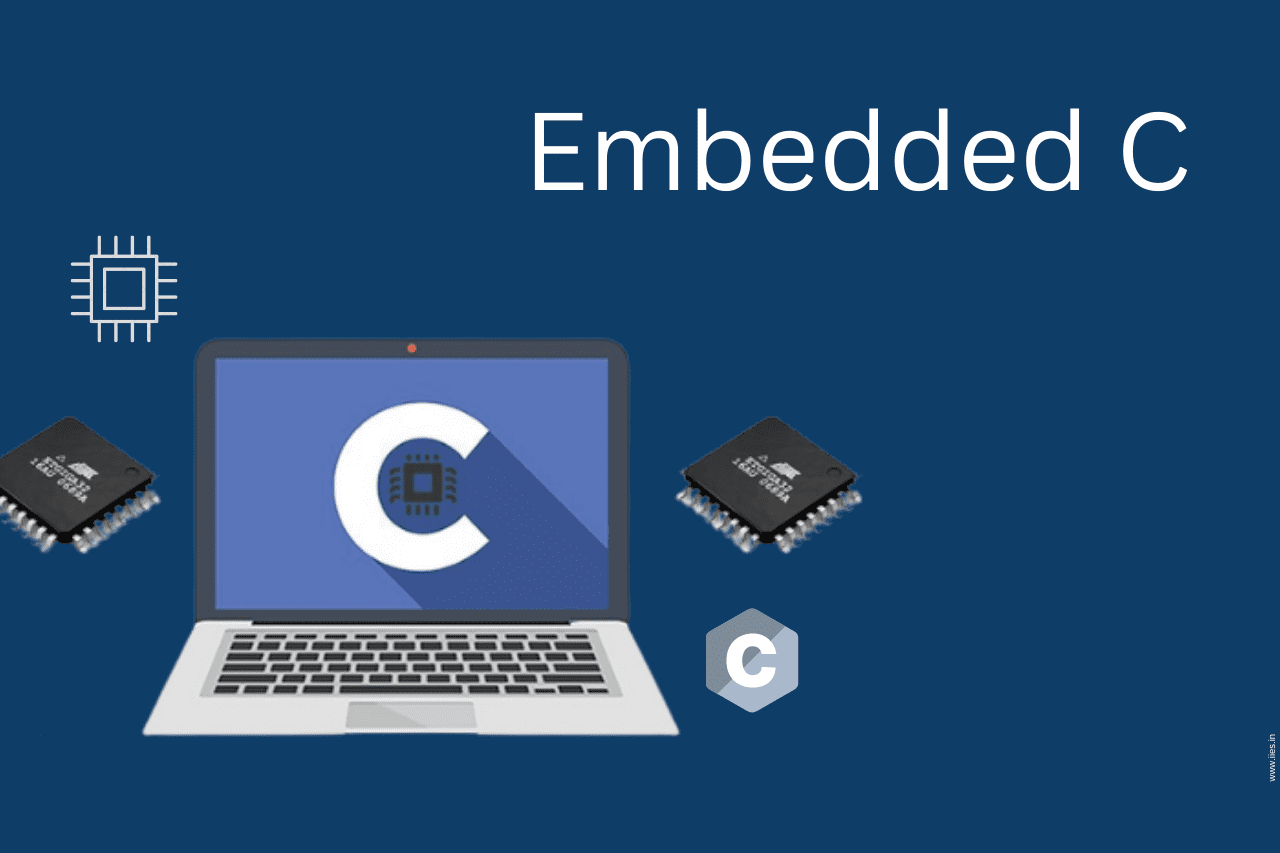Learn Embedded C Programming and Build a Career in Embedded Systems
The Embedded C Course at IIES has been carefully designed for engineers who aspire to master the art of programming microcontrollers. Embedded C, an extension of the C language, is a hardware-independent, high-level programming language widely used in embedded system development.
Because embedded systems often operate with limited memory and processing power, Embedded C programming enables developers to write optimized, reliable, and efficient code. Through this course, learners will understand how to translate theoretical concepts into real-world embedded applications.

Course Name: “Crash Course on Embedded C”
Duration – 10 Days
No. Of hours per day – 4 hours
Total No of hours – 40
Pre- and post-assessment – YES
Project – YES
Course completion certificate – YES
Pre-Requisite – Programming in C
“Embedded C” is a robust set of language extensions for the C Programming Language. Specially designed for microcontroller Embedded c programming, it delivers high-efficiency solutions in areas where resource usage is constrained. Its portability, combined with low-level access to memory, makes it a top choice for system-level programming.
“Embedded C” is akin to a hardware interfacing language, used for direct manipulation of registers or memory, allowing developers to harness the raw power and efficiency of low-level device operations. Its scope extends beyond the realm of traditional computing systems – from smartphones to modern-day household appliances, and even complex control systems.
“Embedded C” provides a vital platform for accessing the full capabilities of microcontrollers and alike hardware – fulfilling specific needs of power, speed and size for embedded systems. As digital technology progresses, “Embedded C” continues to facilitate innovation for extending the human-digital interface.
By the end of this course, participants will be able to:
After completing this course, students can pursue rewarding careers such as:
The demand for Embedded C professionals continues to rise as industries shift toward automation, smart devices, and AI-driven hardware solutions.
Embedded C programming is used across multiple industries, including:
Embedded C also powers everyday systems such as traffic lights, speed detectors, and smart home devices, making it an indispensable language in modern electronics.
IIES offers placement-oriented embedded courses designed by industry experts. The Crash Course on Embedded C equips learners with practical knowledge and project-based experience.
Take your first step toward a successful career in embedded systems design and development.
Enroll now and build the future of technology with IIES.
A programming language that is an extension of C is called embedded C. It is named “embedded” because it is frequently used in embedded devices and shares the same syntax as C. For the purpose of creating foolproof embedded systems, embedded C includes I/O hardware operations and addressing, fixed-point arithmetic operations, and memory/address space access, among other capabilities.
C delivers input-optimized machine instructions to increase the embedded system’s efficiency. Since the majority of high-level languages employ libraries, the additional storage space required makes them difficult for embedded systems.
I think there are a few nice practices that programmers should have:
Specific compilers that can provide particular hardware/microcontroller-based output are utilized for embedded C. The following are common compilers used to run embedded C language programs: compiler Keil.
Apart from a few extensions and the operating environment, C and Embedded C truly have a few differences. Because C and Embedded C are both ISO Standards, their syntax, datatypes, functions, and so on are almost identical.
In Embedded C, the Standard C Programming Language is effectively extended with additional capabilities such as Addressing I/O, Multiple Memory Addressing, Fixed-Point Arithmetic, and so on. In contrast to Embedded C, which is used to create applications for microcontrollers, C is typically used to create desktop apps.
The C language’s extension variation is known as embedded C. This programming language is independent of hardware.
Although embedded C is not as difficult as some other languages, it is difficult to read or modify
Each embedded system’s functionalities are managed and controlled by a microcontroller. The C programming language now has Embedded C, which makes it simpler to create embedded systems. In other words, programming microcontroller-based devices is helpful.
With embedded C, int, short, and long are the three forms of integer data that can be used.
To tell the software where the pins are, developers employ keywords. The program declares the bits and single pins using common keywords like bit, sbit, SFR, etc. The embedded C software has these keywords set up already.
A basic embedded C program, for Example: led blinking code in Embedded C
The circuit diagram for the sample circuit may be seen in the image below. It includes an 8051-based Microcontroller (AT89C51) and all of its fundamental parts, including the RESET circuit, oscillator circuit, and resistors, as well as parts for flashing LEDs.
Code
#include
sbit Led=P1^1;
Void Delay (unsigned int a);
Void main ()
while (1){
Led=1;
Delay (100);
Led=0;
Delay (100);
}
}
Void Delay (unsigned int a){
int j, k;
for (j=0; j<a; j++)
for (k=0; k<1275; k++);
}
Indian Institute of Embedded Systems – IIES